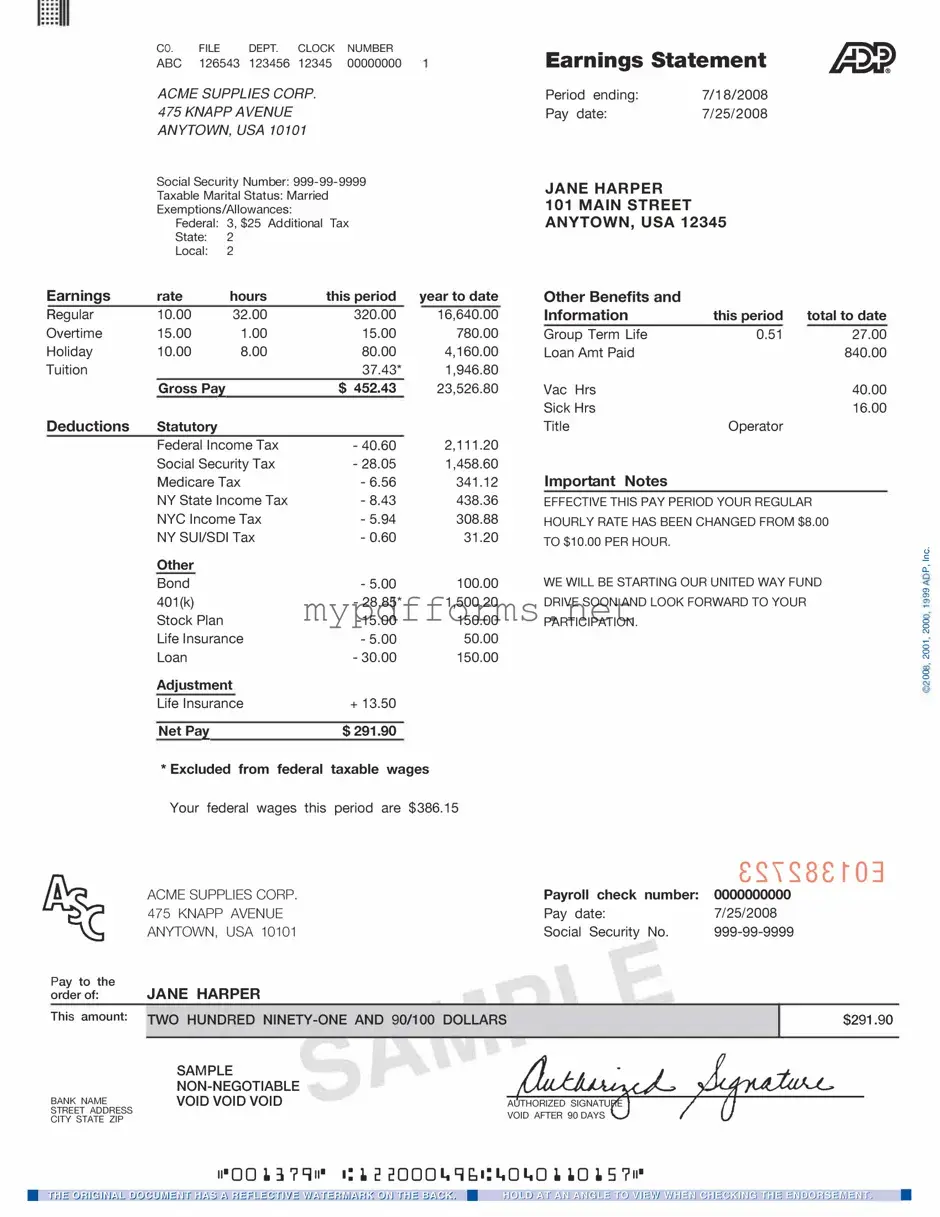Understanding your pay stub is essential for managing your finances effectively, and the ADP Pay Stub form is a key document in this process. This form provides a detailed breakdown of your earnings, including gross pay, deductions, and net pay. It also outlines the hours worked, overtime, and any bonuses or commissions earned during the pay period. Additionally, the ADP Pay Stub includes information on various deductions, such as taxes, health insurance premiums, and retirement contributions, allowing you to see where your money goes each pay period. By reviewing this information regularly, you can ensure that your pay is accurate and make informed decisions about budgeting and saving. Whether you are an employee checking your pay or an employer providing this important document, understanding the components of the ADP Pay Stub form can empower you to take control of your financial well-being.
